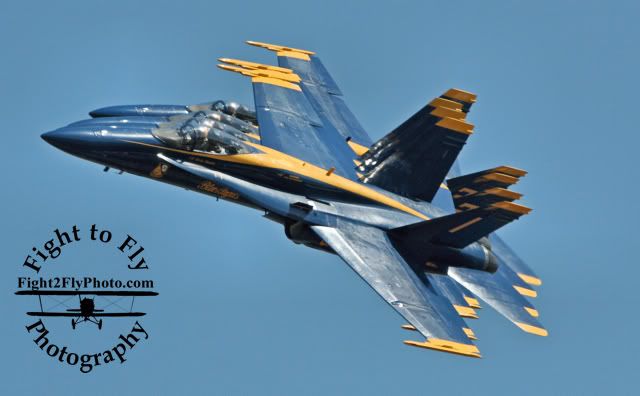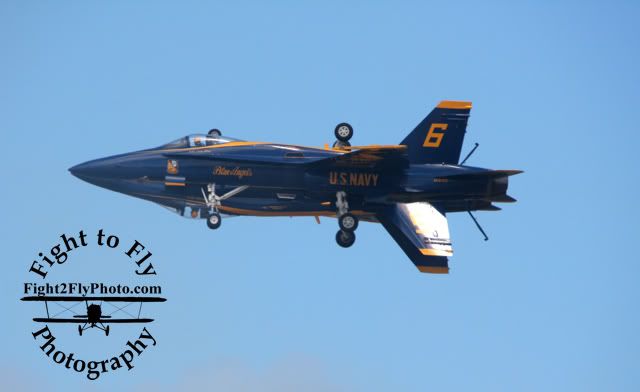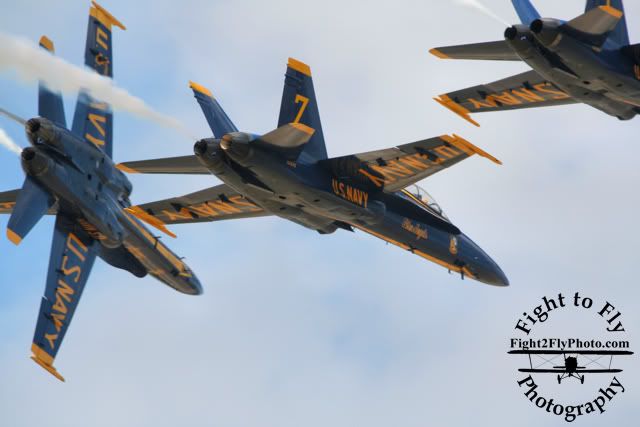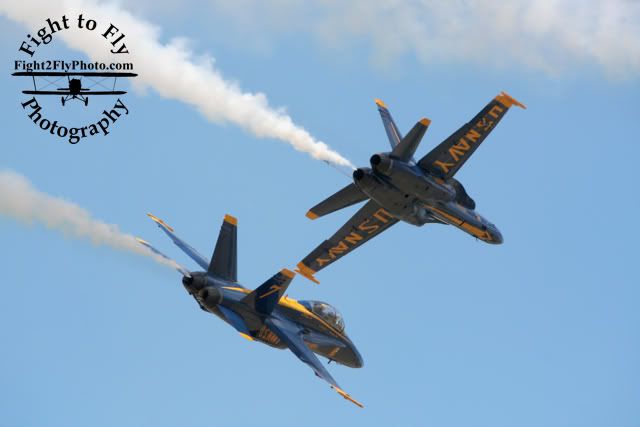What's my number one piece of advice when it comes to catching great photographs at airshows? Know what is going to happen ahead of time.
This can be done several different ways. One of the easiest is simply to carry a radio scanner with you that allows you to listen to the tower controllers. This may not be as good as a discrete frequency or airboss' frequency, but still gives you a good 5-10 minute heads up as to where airplanes will be approaching from, what type of airplane, and the time to expect it. Example: At the Oregon International Airshow there were three aircraft fly-by's that took place on the two show dates: the F-117, F-15, and KC-135. Because I had a scanner I was able to know where and when each aircraft would be approaching the showline a good 5-10 minutes before it was announced over the PA. This gives you plenty of time to adjust camera settings, ensure you have enough film/memory for the passes, and prepare yourself for the types of pictures you want to get.
Another way you can do this is to simply familiarize yourself with airshow rutines such as the US Navy Blue Angels or USAF Thunderbirds. Both teams perform the same maneuvers in the same order each year which gives you a chance to plan ahead of time. This will make your shots much more consistant and also gives you plenty of time to setup your shot properly.
 The picture above shows what is a very dynamic maneuver flown by the Blue Angels. Due to the formation and the way it is setup the apperance changes drastically to the observer on the ground.
The picture above shows what is a very dynamic maneuver flown by the Blue Angels. Due to the formation and the way it is setup the apperance changes drastically to the observer on the ground.
This picture of a maneuver called, "The Fortus," is also easily achievable due to prior knowlege.
 This is one of the most difficult pictures to capture at a Blue Angels show as the Diamond formation comes from directly behind the crowd. Depending upon your location at the airshow and how show center is arranged for the Blue Angles, the wingmen break formation either directly over the crowd or just in front as shown in this picture. To capture this picture I had my camera already aimed approximately where I thought the formation would fly as tracking them going directly overhead is extremely difficult. Especially with a heavy lens. Once the jets were in the viewfinder I began snapping pictures, and this was the first one off in a burst of about 5.
This is one of the most difficult pictures to capture at a Blue Angels show as the Diamond formation comes from directly behind the crowd. Depending upon your location at the airshow and how show center is arranged for the Blue Angles, the wingmen break formation either directly over the crowd or just in front as shown in this picture. To capture this picture I had my camera already aimed approximately where I thought the formation would fly as tracking them going directly overhead is extremely difficult. Especially with a heavy lens. Once the jets were in the viewfinder I began snapping pictures, and this was the first one off in a burst of about 5. The following was the third shot in the same burst.

That's it for now! I hope this tip is able to help you out at your next airshow outting. I'll be explaining more tips and tricks in the weeks and months to come. I will be re-writing and editing these posts in a seperate document as part of my new book. Consider these my extremely rough, rough drafts. :)

No comments:
Post a Comment